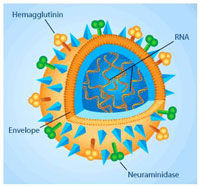Proteins linked with Alzheimer's, other neurodegenerative diseases found to clump in normal aging
In neurodegenerative diseases, clumps of insoluble proteins appear in patients' brains. These aggregates contain proteins that are unique to each disease, such as amyloid beta in Alzheimer's disease, but they are intertwined with small amounts of many other insoluble proteins that are normally present in a soluble form in healthy young individuals. For years, these other proteins were thought to be accidental inclusions in the aggregates, much as a sea turtle might be caught in a net of fish.
Now, in a surprising new finding, researchers at the University of California, San Francisco, report that many of the proteins present as minor components of disease aggregates actually clump together as a normal part of aging in healthy individuals.
The discovery, in the C. elegans roundworm, refutes a widespread belief that the presence of insoluble proteins is unique to degenerative disease and that the main proteins traditionally associated with each disease (like amyloid beta in Alzheimer's disease) are the only ones that could have an impact.
The research showed that a variety of common soluble proteins, such as those responsible for growth, can become insoluble and form aggregates in animals as they age. Moreover, the research demonstrated that gene manipulations that extend C. elegans lifespan prevent these common proteins from clumping. The findings appear in PLoS Biology.
"If you take people with Alzheimer's and look at their aggregates, there are many other proteins in the clump that no one has paid much attention to," said UCSF biochemist Cynthia Kenyon, PhD, director of the Larry L. Hillblom Center for the Biology of Aging at UCSF and senior author of the paper. "It turns out that about half of these proteins are aggregating proteins that become insoluble as a normal part of aging."
The team found that, in the presence of proteins specific to Huntington's disease, these other insoluble proteins actually sped up the course of the disease, indicating that they could be fundamental to its progression. The findings indicate that widespread protein insolubility and aggregation is an inherent part of aging and that it may influence both lifespan and neurodegenerative disease, Kenyon said.
The presence of insoluble protein aggregates has long been recognized as a hallmark of such neurodegenerative diseases as Alzheimer's, Huntington's and amyotrophic lateral sclerosis (ALS). The team, led by first author Della C. David, PhD, a postdoctoral scholar in the UCSF Department of Biochemistry and Biophysics, asked a simple question that had never been addressed: Do normal proteins form insoluble clumps when normal, healthy individuals age?
They identified roughly 700 proteins in a C. elegans worm that become insoluble as the animal ages. These insoluble proteins are highly over-represented in the aggregates found in human neurodegeneration, the researchers wrote in their paper. They found that many of the proteins that became insoluble were already known to accelerate the aging process and to influence the aggregation of the major disease proteins. Yet even in the healthy aging worms, these proteins had a propensity for clumping and forming hard, rocklike structures.
The team found that this aggregation was significantly delayed or even halted by reducing insulin and IGF-1 hormone activity, whose reduction is known to extend animal lifespan and to delay the progression of Huntington's and Alzheimer's disease in animal models of neurodegenerative diseases.
Most read news
Topics
Organizations
Other news from the department science

Get the life science industry in your inbox
By submitting this form you agree that LUMITOS AG will send you the newsletter(s) selected above by email. Your data will not be passed on to third parties. Your data will be stored and processed in accordance with our data protection regulations. LUMITOS may contact you by email for the purpose of advertising or market and opinion surveys. You can revoke your consent at any time without giving reasons to LUMITOS AG, Ernst-Augustin-Str. 2, 12489 Berlin, Germany or by e-mail at revoke@lumitos.com with effect for the future. In addition, each email contains a link to unsubscribe from the corresponding newsletter.



















































